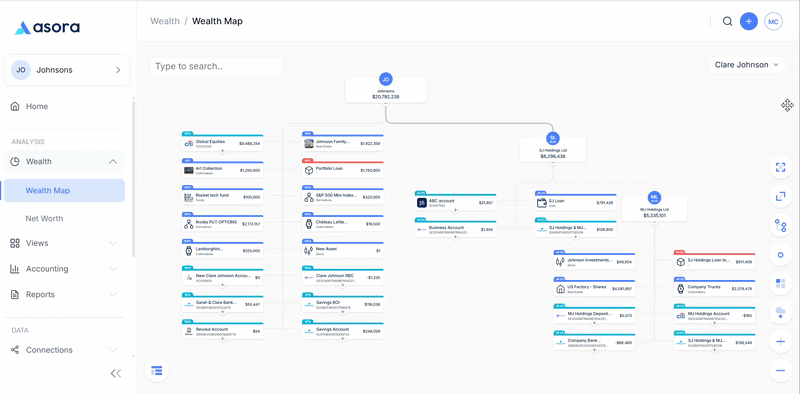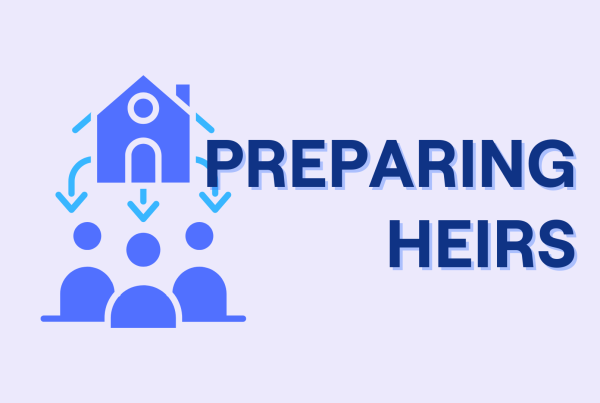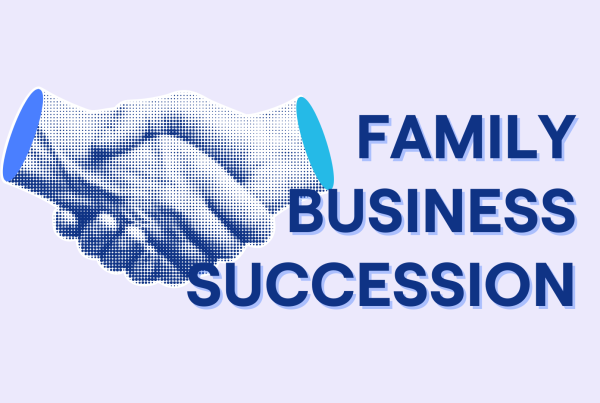TL;DR
Family office data aggregation in Asora unifies banks, custodians, and private asset data into a single, up-to-date view, where positions are auto-imported and matched where supported, entities can be linked to family members, and templated reports are generated in minutes. Single-family offices often waste hours each month downloading files, matching positions to transactions, and rebuilding spreadsheets because data sits in separate systems. Modern data management with Asora reduces that cycle by pulling custodian/bank feeds, normalizing asset classes, linking documents to the relevant assets and entities, and maintaining a central source of truth for the family office.
Data Aggregation for Single-Family Offices: A Practical Overview
Single family offices are all too familiar with the quarterly consolidated reporting process.
Teams log into multiple bank portals, download custodian statements as PDFs, copy fund data from capital statements into Excel, reconcile positions against transactions by hand, exchange draft reports with advisers, and then repeat the cycle the next quarter.
Family office data aggregation is designed to break that cycle.
Data aggregation brings investment data sources (banks, custodians, private equity funds, and real estate holdings) into a single platform, where positions are auto-imported and reconciled where supported, entities can be linked to owners, documents can be attached to the relevant records, and templated reports can be generated from up-to-date data in minutes.
Execution is more complex in practice. Many platforms treat bankable assets and private assets as separate problems, forcing parallel spreadsheets for alternatives. Others focus on portfolio data without considering entity structures, documents, or the workflows that support family office operations.
This guide explains what family office data aggregation truly means, why spreadsheets often fail during consolidation, and how to implement a blueprint that consolidates banking and custodial data, private assets, entities, and documents into a single, up-to-date view.
What Consolidation Really Means in a Family Office
Family office data aggregation consolidates financial data from multiple sources, including bank accounts, custodian holdings, private equity commitments, and real estate holdings. This provides a single platform where teams can view total family wealth, reconcile positions where supported, calculate performance, and generate reports without having to rebuild spreadsheets.
Different stakeholders require different perspectives on the same reporting data.
Principals want at-a-glance clarity on net worth, recent transactions, and performance. They approve distributions, review investment opportunities, and check portfolio performance during meetings and on the go.
Advisors and operators need drill-downs into lot-level cost basis, transaction history, fee calculations, and IRR/MOIC metrics. They export details for tax prep and compliance reviews. They reconcile positions against custodian feeds and manage reconciliations when discrepancies occur.
A modern family office investment management software platform consolidates bankable and private assets into a single, secure environment, where both groups work from the same record, eliminating version conflicts, email file transfers, and uncertainty about spreadsheet updates.
Scope First: Everything You Need in One View
Before choosing family office data software, define what is being consolidated.
Bank and custodial accounts: Cash balances, securities positions, foreign exchange holdings, transaction history, fees, dividends, and interest accruals. Connections to multiple banks and asset managers were supported via automated feeds.
Private and alternative investments: Commitments to equity and venture capital funds, capital calls logged as they are received, distributions recorded when they are credited to accounts, quarterly valuations, capital account balances, and performance metrics such as IRR, TWR, MOIC, and DPI.
Entities and ownership structures: Trusts, SPVs, holding companies, and how they connect to family members. Look-through visualization that shows total wealth without double-counting when one entity owns another.
Documents: Bank statements, custodian reports, K-1s, LPAs, capital call notices, real estate deeds, appraisals—tied directly to the assets, entities, or transactions they support instead of scattered across email and shared drives.
Workflows: Support day-to-day ops. Route proposals by sharing the correct document in the platform, logging and assigning reconciliation issues, tracking quarterly valuation tasks, and managing capital call to-dos with due dates and owners.
Most family offices handle two or three of these categories well but struggle to consolidate all five into a single, up-to-date view that updates via data feeds, where supported, and enables timely and accurate reporting.
Why Spreadsheets Break at Consolidation
Spreadsheets often fail to aggregate family office data effectively because they require manual data entry and reconciliation across disconnected sources.
What happens when consolidation is attempted in Excel:
Multiple sources, different formats: Two bank feeds arrive as CSV files with different column headers. Two private equity funds send quarterly reports as PDFs with non-standard layouts. One SPV’s accounting ledger is provided by a bookkeeper in a third format. That’s five separate files to normalize before consolidation can even begin.
No shared identifiers: A custodian labels Apple stock “AAPL.” A bank statement shows it as “Apple Inc.” A spreadsheet uses a third variation. Matching positions across sources requires manual mapping or fragile lookup formulas that break when data changes.
Reconciliation depends on manual joins: Matching positions to transactions, calculating cost basis by lot, and rolling up entity ownership rely on formulas that cascade across tabs. One mistake ripples through the entire workbook. Fixing it means tracking down which cell went wrong and hoping other errors weren’t missed.
Version chaos: A draft report is sent to an advisor on Tuesday morning. They reply on Wednesday with questions. Changes are saved as “Q3_Report_v2_final.xlsx.” On Thursday, the accountant needs an update. Now, three versions are circulating, and no one is sure which is the most up-to-date.
This leads to multiple “truths” across stakeholders, a lack of real-time entity look-through when principals ask questions, and fragile record-keeping that breaks every time the consolidation is rebuilt from scratch.
The Consolidation Blueprint
Family office data aggregation is an effective consolidation that is run as a single operating loop, rather than a new spreadsheet project every month.
The flow looks like this:
Connect sources → Normalize and reconcile → Model entities and look-through → Attach documents → Report from the record
Here’s how each step works in practice.
1. Connect Banks, Custodians, and Assets into One Pipeline
Data aggregation starts with automated connections to banks and custodians. Direct feeds pull positions, transactions, and balances on a daily or provider-specified feed frequency where supported. For private equity, venture capital, real estate, and other illiquid assets, teams securely upload fund documents and capital statements.
Coverage checklist:
- Financial institutions (operating accounts, savings, money market)
- Custodians (brokerage accounts, trust accounts, retirement accounts)
- Private funds (PE, VC, hedge funds, private credit)
- Refresh cadence (daily or at each provider’s feed frequency for banks/custodians where supported; quarterly/as provided for private assets)
- Access controls (multi-factor authentication, role-based permissions)
Impact: Automated feeds replace manual downloads. Time spent gathering and reconciling data can decrease by up to 80% when sources are consolidated into a single pipeline, eliminating the need for portal logins and file exports.
2. Normalize and Reconcile so the Combined Record Is Trustworthy
Raw data from different sources needs to be standardized before it is usable. Instruments and tickers are mapped to standard identifiers (e.g., ISIN codes). Currencies convert to the reporting currency. Fee line items are categorized consistently across custodians.
Reconciliation checks positions against transactions to catch discrepancies. Tranche-lot tracking maintains cost basis at a granular level, so tax calculations do not need to be rebuilt every quarter.
Data-reconciliation software for family office operations flags exceptions where supported (positions that do not match transactions, missing cost basis, unrecognized securities) and routes them to operators for resolution, with decisions captured as linked notes or documents.
Impact: Email back-and-forth about “which number is right” declines materially when everyone works from the same reconciled record. Accounting becomes cleaner, and audits proceed more efficiently because the trail from transaction to position to report is clear.
3. Private Assets in the Same Record (No Parallel Sheets)
Private assets (private equity, venture capital, real estate, and direct investments) belong on the same platform as liquid holdings, not in shadowy spreadsheets you maintain separately.
Track the full lifecycle:
- Commitment amounts
- Capital calls as they arrive
- Distributions when they hit accounts
- Quarterly valuations
- Capital account balances that reflect fees and carried interest
Calculate performance metrics (IRR, TWR, MOIC, TVPI, DPI) in the same system where you measure liquid portfolio performance and portfolio analysis. Maintain entity look-through so that it is clear which trust or SPV holds which fund, without requiring manual roll-ups.
Impact: Alternatives become first-class data instead of footnotes. “Shadow sheets” for equity and real estate that never quite sync with the main wealth report are eliminated.
4. Entities and Ownership Look-Through Across All Holdings
Family wealth doesn’t reside in a single account under a single name. It’s distributed across trusts for tax planning, SPVs for specific investments, holding companies for operating businesses, and individual family member accounts.
Model these structures once in a living entity tree. Configure look-through views to view total family wealth, individual entity balances, or specific beneficiary allocations without relying on hard-coded spreadsheet tabs that break when structures change.
The platform rolls up correctly at any level, including family, generation, entity, or individual.
Impact: Trustees and principals receive answers in minutes, rather than waiting for someone to rebuild bespoke workbook roll-ups. Wealth managers and investment managers work from the same entity structure without version conflicts.
5. Documents in Context (Not Email Attachments)
Document management means storing K-1s, LPAs, capital call notices, real estate deeds, and bank statements beside the assets, entities, or transactions they support.
When someone asks about a specific fund, it’s easy to click through to view the LPA, quarterly reports, and capital statements, without needing to search through emails or shared drives. When a capital call is made, the notice is attached to the transaction that records the payment.
Access is typically managed through platform permissions tailored to users’ roles and scope; there is no per-document permissioning.
Impact: Files sent via email shrink by 50% or more when evidence is stored alongside the data. Audits proceed more efficiently because supporting documentation is already linked to the records being reviewed.
6. Reporting from the Timely Data
Performance monitoring and reporting are pulled from the timely records you use for operations. No separate reporting workbook to maintain.
Principals get concise, executive-ready packs accessible via mobile dashboards for quick reviews during meetings or while traveling.
Advisers and operators access drill-downs with IRR/TWR calculations, lot and tranche detail, fee analysis, and custom exports. Reports are updated when the custodian feeds refresh on a daily or provider-specified frequency, or when new transactions are logged.
Impact: Reporting time is reduced from days to under 10 minutes when packs are pulled from the timely record. Principals and advisors work from the exact numbers.
Conclusion
Family office data aggregation isn’t a one-off import project. It’s an operating loop that keeps banks, custodians, assets, entities, documents, and workflows in a single up-to-date record.
For lean single- and multi-family offices, this approach means minutes, not days, reporting, fewer email attachments, dramatically less time spent on manual data handling and reconciling, and principals and advisors working from the same source of truth.
The results speak for themselves:
- Bardfour Family Office mapped its complete wealth structure and went live in under four weeks, eliminating fragmented spreadsheets and providing the family with clear visibility for estate planning decisions.
- A Family Trust cut report preparation time by 60% and manual data gathering by roughly 80% after implementing automated aggregation.
Operational efficiency improves. Risk management strengthens. Informed investment decisions happen faster because you have timely data instead of waiting for month-end consolidation.
Request a demo and see Asora consolidate your holdings into one platform.
FAQ
What exactly counts as family office data aggregation when moving off spreadsheets?
Family office data aggregation consolidates all financial data sources into a single platform that reconciles positions, calculates performance, and generates reports automatically. The best family office software handles entity structures (such as trusts, SPVs, and holdcos) with look-through views, document management tied to records, and workflows for approvals and exceptions.
Can equity and real estate be tracked alongside bank and custodial data in one live view?
Yes. Modern family office technology consolidates multiple asset classes into one portfolio management platform. Liquid holdings are updated via custodian feeds, while private assets are logged through secure document ingestion. The platform normalizes diverse assets into a unified data model, allowing you to view total wealth, calculate consolidated performance (including IRR and MOIC), and maintain entity look-through without the need for parallel spreadsheets.
How are reconciliation exceptions assigned, resolved, and logged for auditability?
Data reconciliation software for family office operations automatically flags mismatches between custodian positions and internal records. The platform assigns exceptions to operators for resolution, tracks who handled each case, logs the fix with timestamps, and maintains an audit trail. Once resolved, the audit log records what was wrong, who made the correction, when, and what documentation supported the change.
Do executive reports and dashboards update automatically from the live record?
Yes. Modern family office wealth management platforms generate executive reports and dashboards directly from live data. When the custodian feeds refresh overnight or you log a new capital call, performance reporting updates automatically. Principals access current dashboards via mobile apps with biometric login, while advisors pull drill-downs and exports without waiting for manual rebuilds.
What security and access controls should stakeholders expect?
Family office data management software should provide role-based permissions that control which family members, advisors, and staff can view specific entities, assets, and documents. Activity logs track every change with user IDs and timestamps. Data encryption in transit and at rest protects private data. Multi-factor authentication and biometric access prevent unauthorized logins. Look for platforms with ISO 27001 certification and GDPR compliance to guarantee sophisticated analytics and investment analytics meet regulatory standards.







